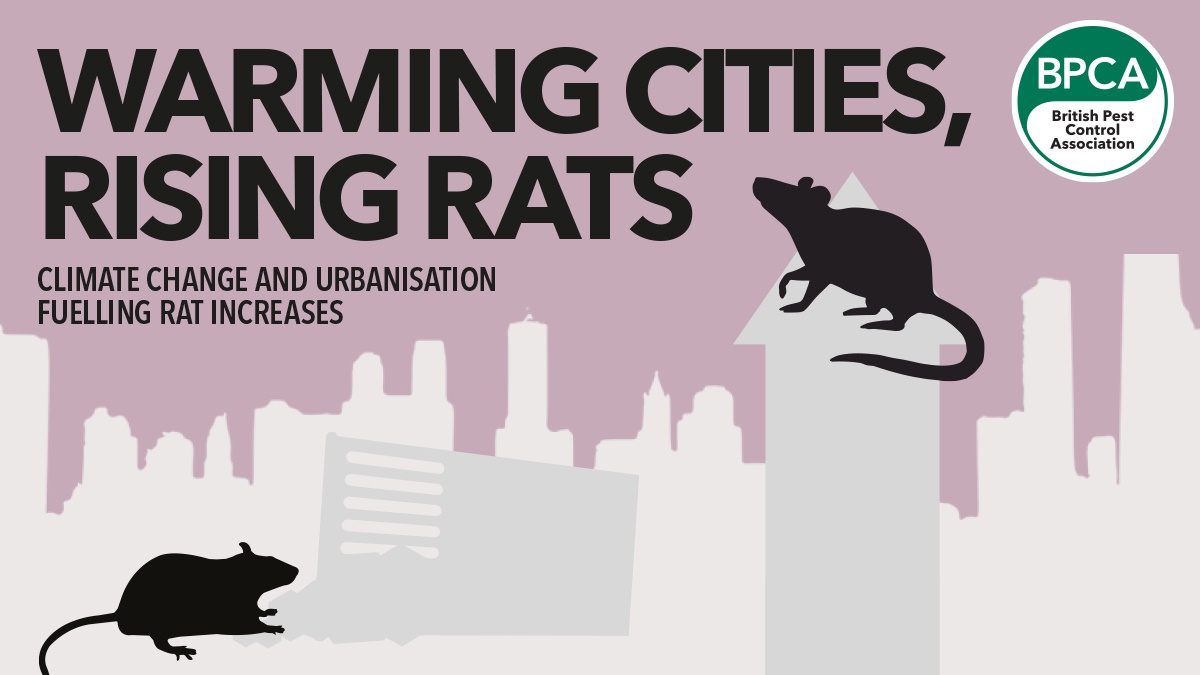PPC119 | TECHNICAL
In this article, we summarise research led by Jonathan L Richardson from the University of Richmond, which examines the concerning rise in urban rat populations globally and its implications for the pest management industry.
Using over a decade’s worth of complaint and inspection data from 16 cities around the world, researchers found that 11 of these cities reported significant increases in rat numbers.

KEY FINDINGS
- The majority of cities studied showed significant increases in rat numbers. Cities that experienced greater rises in average temperatures over time also saw the most significant increases in rat activity
- Rapid urbanisation, especially the loss of green spaces, was strongly linked to faster rat population growth
- Higher human population density was positively associated with rat increases, as more people generate more food waste and shelter opportunities
- The wealth of a city did not seem to affect rat trends, with both affluent and less affluent cities experiencing growth.
Rising temperatures, rising rat numbers
One of the strongest drivers identified was climate warming. Cities experiencing greater increases in average temperatures saw the largest growth in rat populations.
Rats are naturally limited by cold temperatures. Warmer winters mean less winter mortality, longer breeding seasons, and more foraging opportunities. The result? More rats, more often.
This has real implications for pest controllers in the UK.
With milder winters becoming more frequent, particularly in urban centres where the heat island effect is stronger, pest activity could become a year-round issue rather than one that peaks seasonally.
Urbanisation: paving the way for pests
The research also revealed that urbanisation plays a critical role. Cities that lost more vegetation and gained built-up areas saw greater increases in rat numbers.
In heavily urbanised areas, food waste, shelter, and nesting sites are plentiful.
The study found that rats particularly thrive where greenspace is reduced, highlighting the importance of considering urban design and waste management in integrated pest management (IPM) strategies.
For pest controllers, this means anticipating rat problems not just in densely built areas but also in locations undergoing major development or redevelopment.
Lessons for the pest sector
Richardson and his team make it clear that traditional approaches alone will not be enough.
The environment is shifting, and rodent management will need to keep pace with these changes.
The recommendations this research makes will be of no surprise to the pest management sector:
- Warmer conditions mean rats could be active outside even during colder months
- Green areas may help mitigate rat populations indirectly
- Secure waste storage and regular refuse collection are essential
- Continue to focus on proofing and habitat modification rather than relying on chemicals
- A holistic IPM approach is more vital than ever, combining surveillance, exclusion, education, and, where necessary, targeted control.
Perhaps most importantly, we need to engage with clients and communities about the broader context behind rat problems.
Climate change and urbanisation aren’t abstract concepts: they’re realities shaping the pest management landscape today.
As Richardson et al. warn, unless local government and property owners adapt their strategies, rat populations are likely to keep increasing.
The research presents a compelling case for proactive, integrated, and science-based pest management to address the growing rat challenge.
The 16 cities studied in the research by Richardson et al. (2025) were:
Washington, D.C ↑
San Francisco ↑
Toronto ↑
New York City ↑
Amsterdam ↑
Oakland ↑
Buffalo ↑
Chicago ↑
Boston ↑
Kansas City ↑
Cincinnati ↑
Dallas →
Saint Louis →
Tokyo ↓
Louisville ↓
New Orleans ↓
↑ = Significant increase
↓ = Significant decrease
→ = No significant trend
These cities were selected because they had between 7 and 17 years (an average of 12.2 years) of consistent rat sighting and inspection data available.
Human density: more people, more rats
The study also confirmed a positive correlation between human population density and rat increases.
More people mean more food waste, more refuse, and more opportunities for hidden harborage, all of which support larger rat populations.
Interestingly, rat numbers rose equally in wealthy and less affluent cities, suggesting that without targeted control, rats thrive regardless of council budgets.